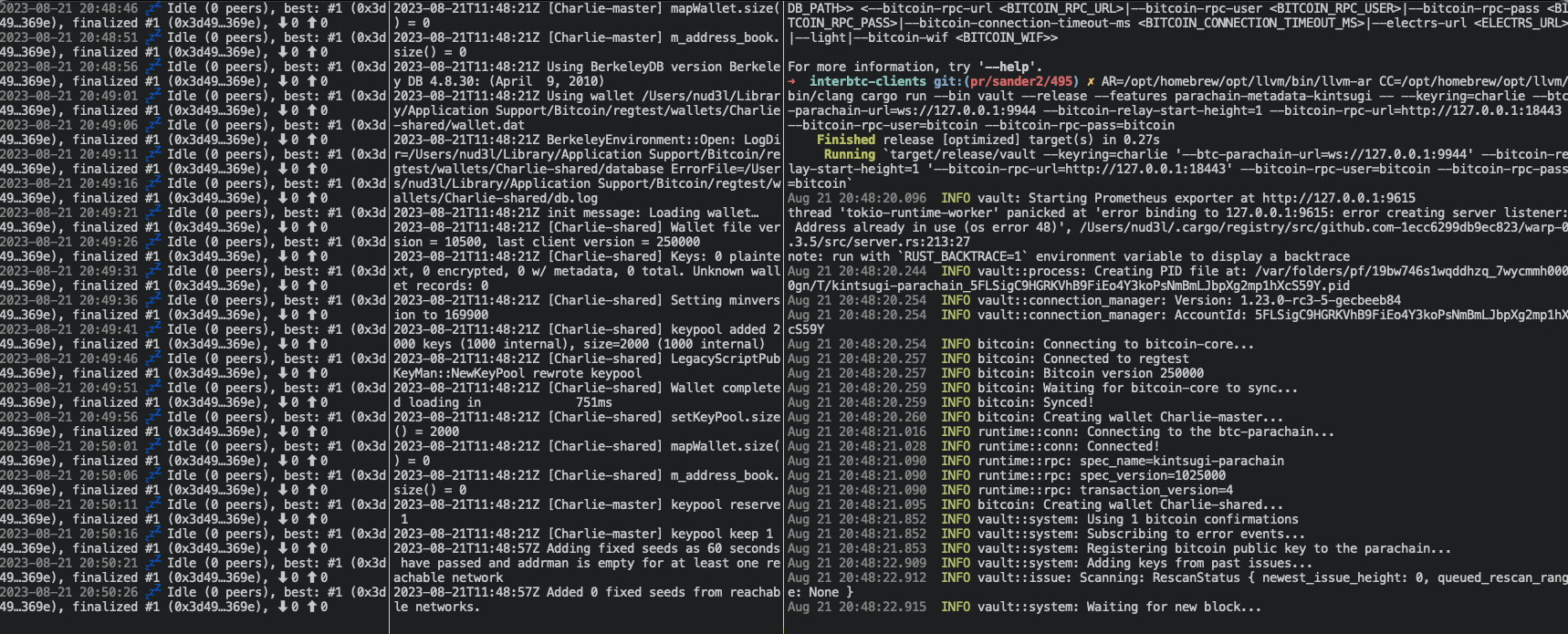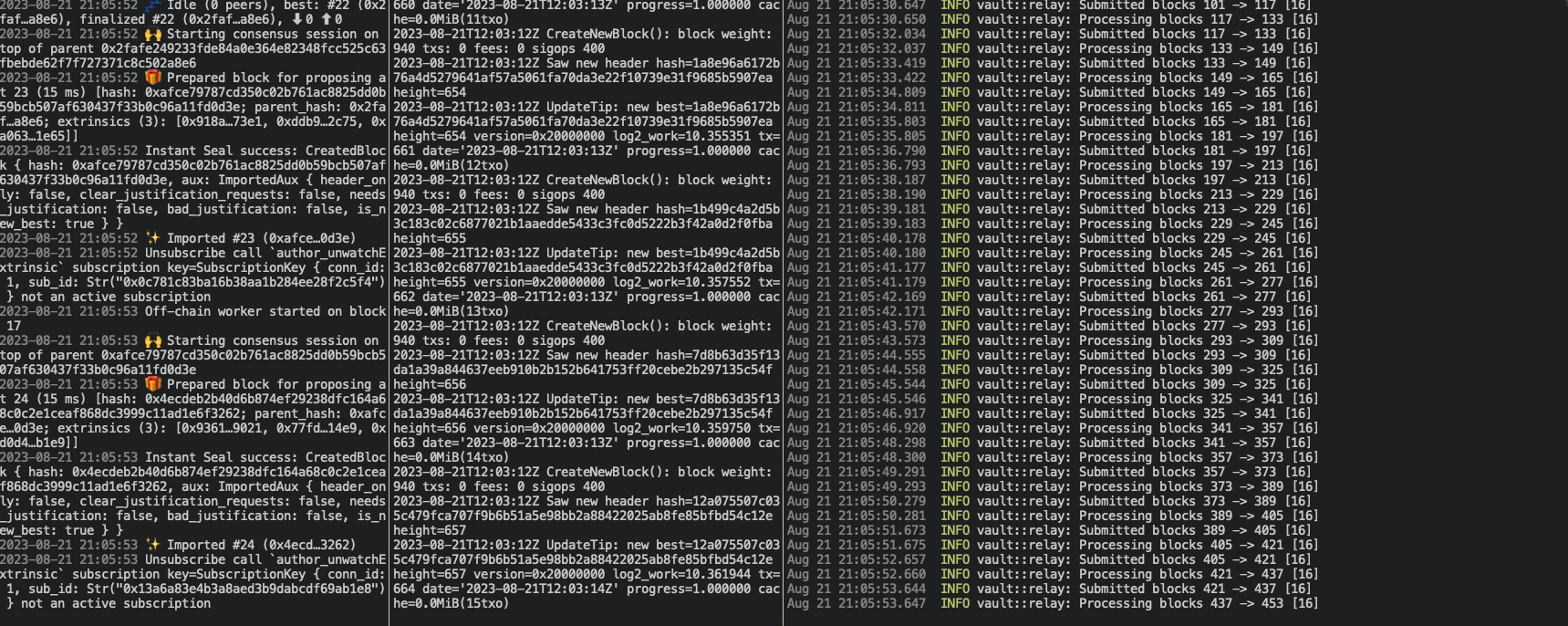Local Development Environment
Start a Local Network
The following steps require developers to manually compile the blockchain node and the client submitting the BTC headers. This is a temporary solution until we have released binaries. Compile times will take significantly longer than the previous steps.
We are going to set up three components to have a complete environment:
- A Bitcoin regtest node
- An Interlay blockchain node
- A BTC-Relay client submitting BTC headers
The Bitcoin regtest node will be installed into your OS. For the other two components, we recommend setting up a folder structure like this:
mkdir bob
cd bob
We will then clone the repositories into this folder so that it looks like this:
bob
├── interbtc # the blockchain node
└── interbtc-clients # the BTC-Relay client
Setup Bitcoin core
Download and install Bitcoin core from the Bitcoin core website.
Make sure to install at least Bitcoin core 24 for inscriptions to work.
Start the Bitcoin regtest node from a terminal:
bitcoind -regtest -txindex -fallbackfee=0.0001 -rpcuser=bitcoin -rpcpassword=bitcoin
Setup an Interlay node
Clone the repository and checkout the btc-hack branch:
git clone git@github.com:interlay/interbtc.git
cd interbtc
git checkout btc-hack
Run the node in a new terminal window:
cargo run --bin interbtc-parachain -- --dev --instant-seal --rpc-methods=unsafe
There can be issues with compiling on Apple Silicon and Linux with the latest C/LLVM toolchain. Check out this issue for help.
Setup the BTC-Relay client
Clone the repository and checkout the bitcoin-25-support branch:
git clone git@github.com:sander2/polkabtc-clients.git interbtc-clients
cd interbtc-clients
git checkout bitcoin-25-support
Run the client in a new terminal window:
cargo run --bin vault --release --features parachain-metadata-kintsugi -- --keyring=charlie --btc-parachain-url=ws://127.0.0.1:9944 --bitcoin-relay-start-height=1 --bitcoin-rpc-url=http://127.0.0.1:18443 --bitcoin-rpc-user=bitcoin --bitcoin-rpc-pass=bitcoin
Successful Node Setup
By the end of the above steps, you should have three terminal windows running:
- The Interlay node
- The Bitcoin regtest node
- The BTC-Relay client

Mine Bitcoin Blocks
Test if the setup works by mining a few blocks on the Bitcoin regtest node:
bitcoin-cli -regtest -rpcuser=bitcoin -rpcpassword=bitcoin -rpcwallet=Charlie-shared -generate 100
Trigger Interlay block production
Produce one block on the Interlay node to kick off the block relaying:
curl -H "Content-Type: application/json" -d '{"id":"1", "jsonrpc":"2.0", "method": "engine_createBlock", "params": [true, true]}' http://localhost:9933
Block Relaying
You should now see that the client is submitting BTC headers to the Interlay node:
